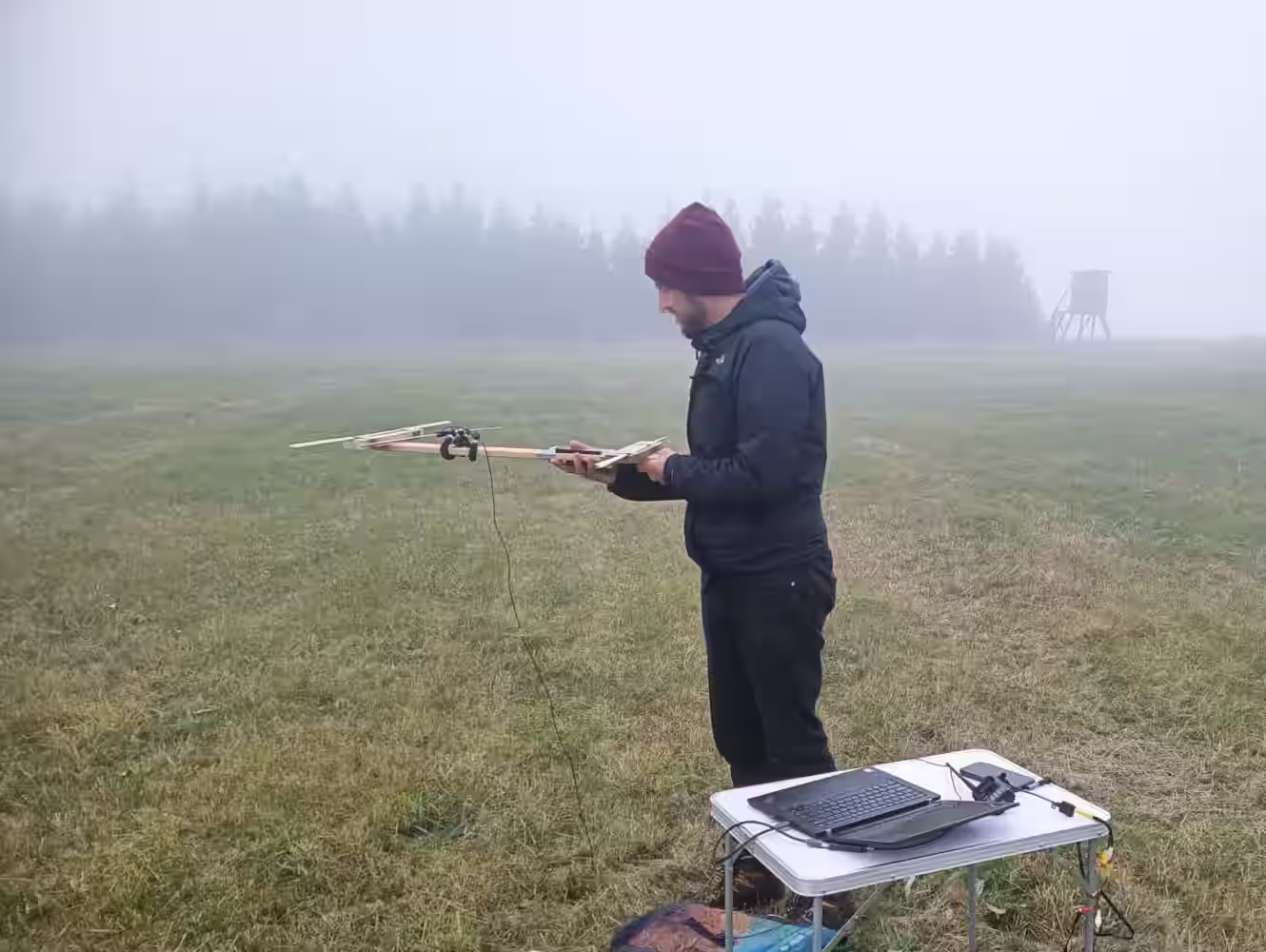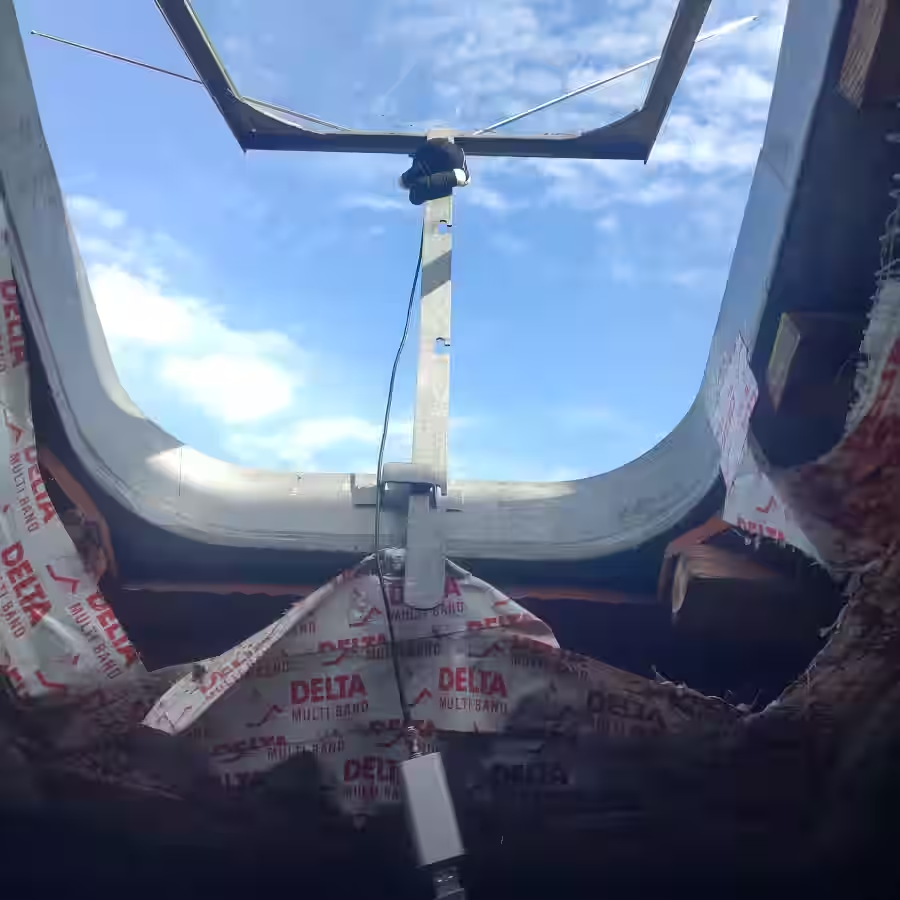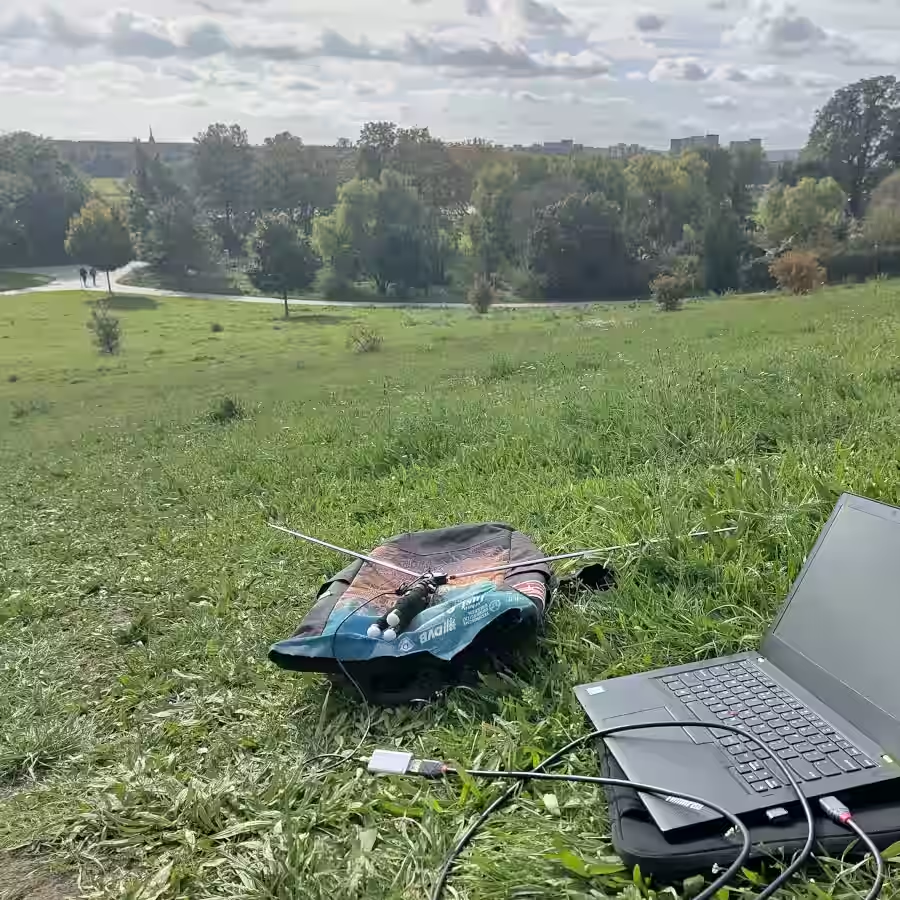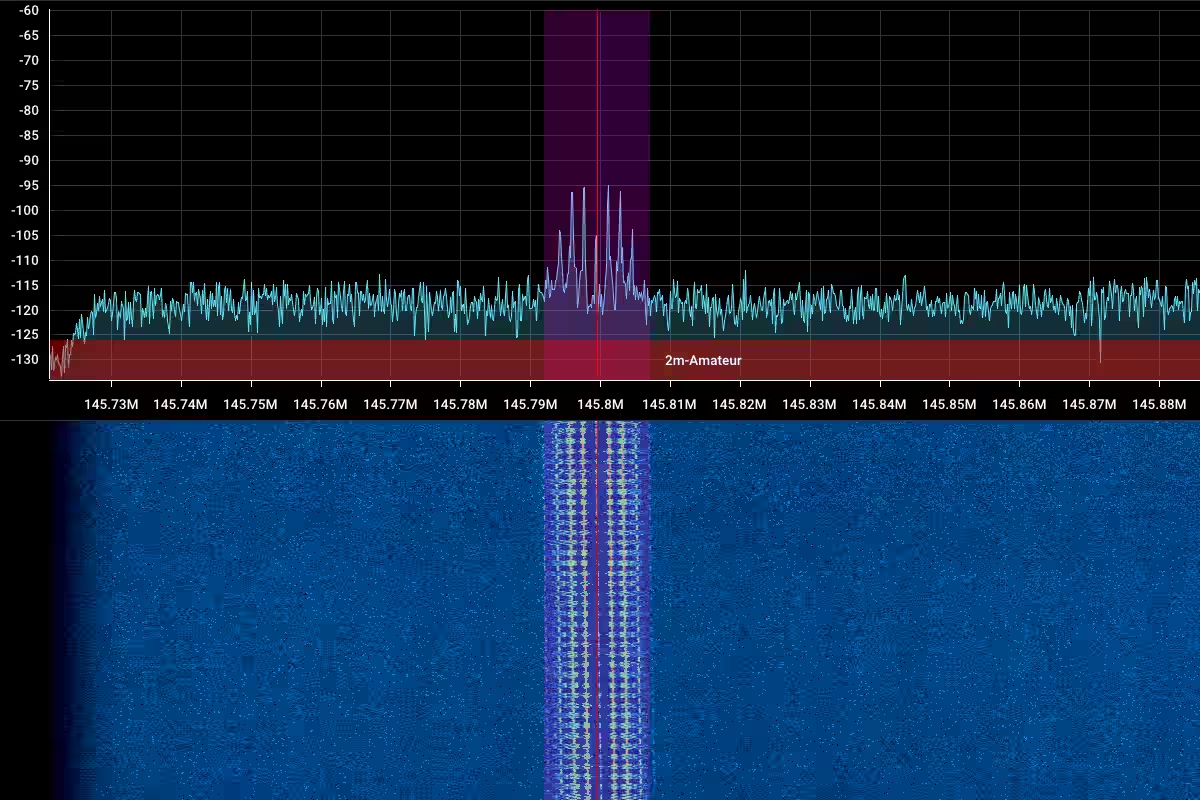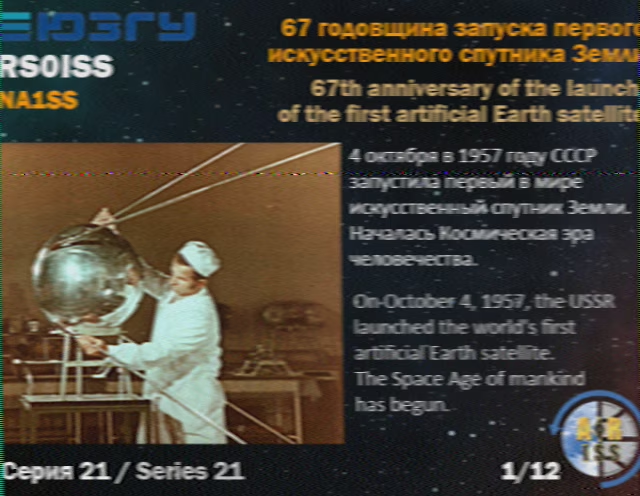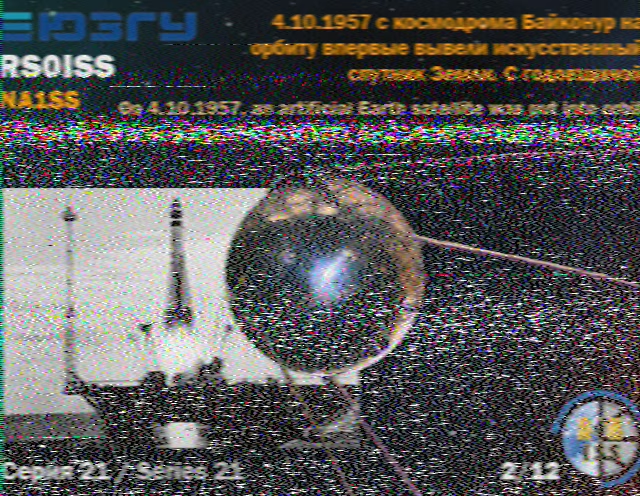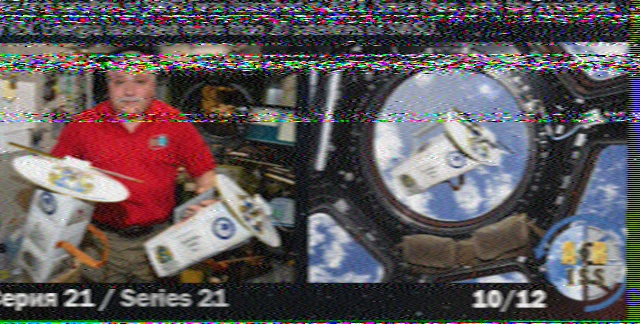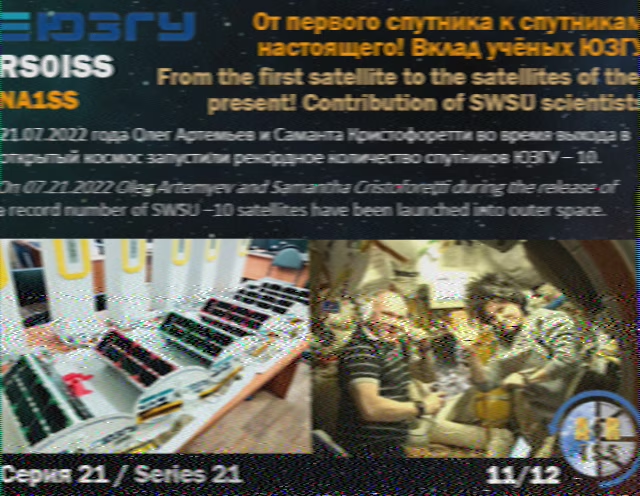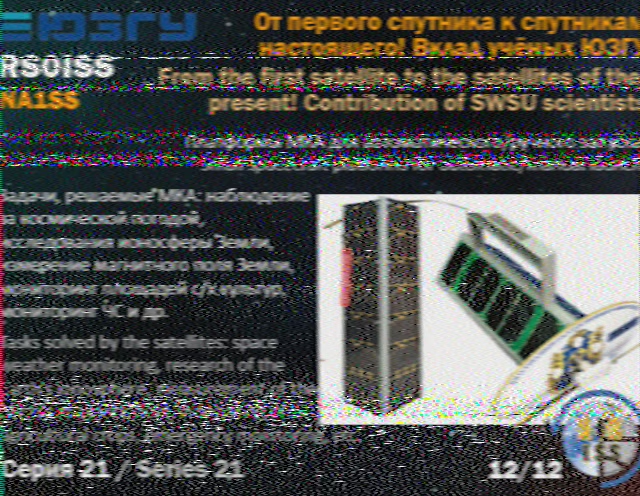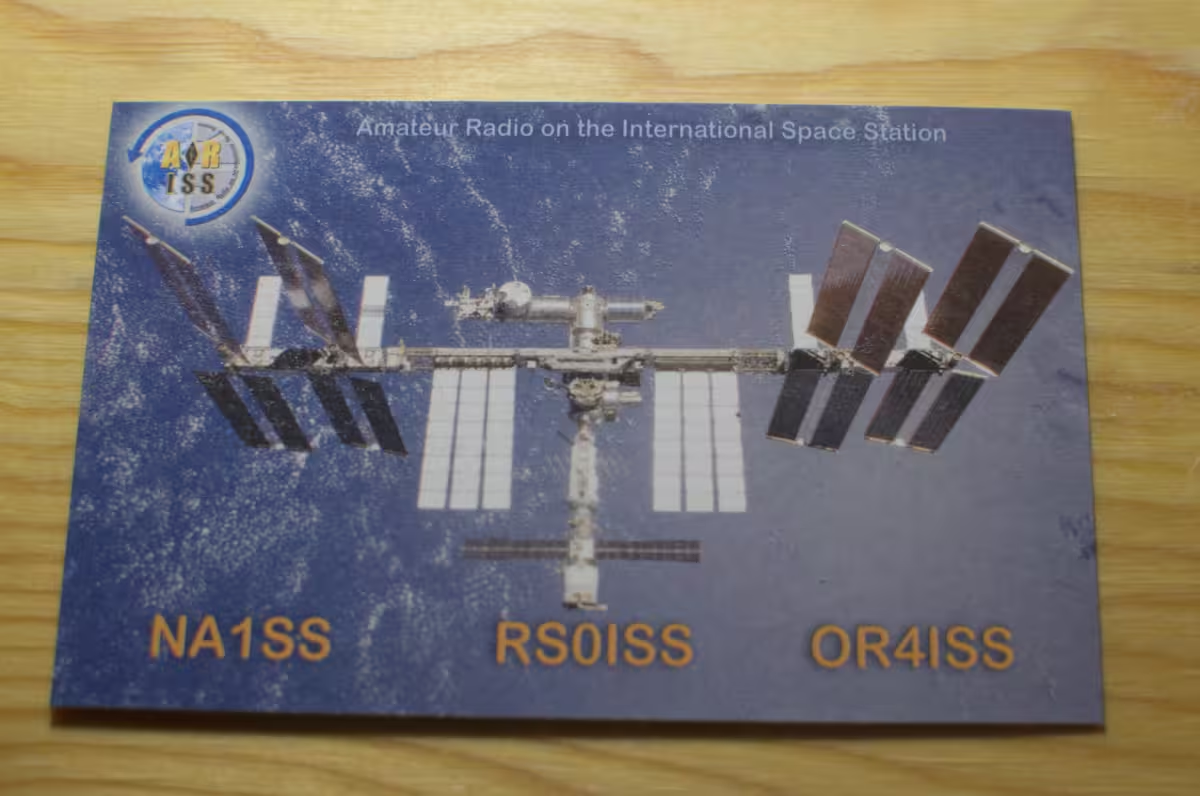Receiving SSTV images from the International Space Station
#Radio67 years ago - on October 4th, 1957 - Sputnik 1, the first artificial satellite of our Earth was launched into orbit. In celebration of this anniversary, the crew of the International Space Station broadcasted a series of 12 images using an amateur radio station in the Russian module of the ISS. I found out about the event via reddit where further details like schedule, mode and frequency were posted.
Three overarching themes of important milestones in the (Russian) history of space exploration are depicted by 4 pictures each. In the first group of pictures, the manufacturing, launch and mission of Sputnik 1 are illustrate. The second group describes the life and work of Konstantin Eduardovich Tsiolkovsky - a pioneer in rocket science and astronautics known among other things for the Tsiolkovsky rocket equation. Bringing us back to the present day, the final group concludes with the current satellite research of the South-West State University (SWSU) near Kursk.
The illustrations where transmitted using slow-scan television (SSTV) in the mode PD120. Each picture has a resolution of 640 x 496 pixels and took 126 seconds to fully transmit followed by a break of about 2 minutes until the next picture in the series. Since the ISS has an orbital period of about 93 minutes, nearly 23 pictures are transmitted per orbit. A typical pass of the ISS over my QTH lasts about 10 minutes, so I am able to receive up to two images per pass with one likely being the one I already got on the previous pass. Therefore it was unfortunately not possible for me to capture all pictures of that series.
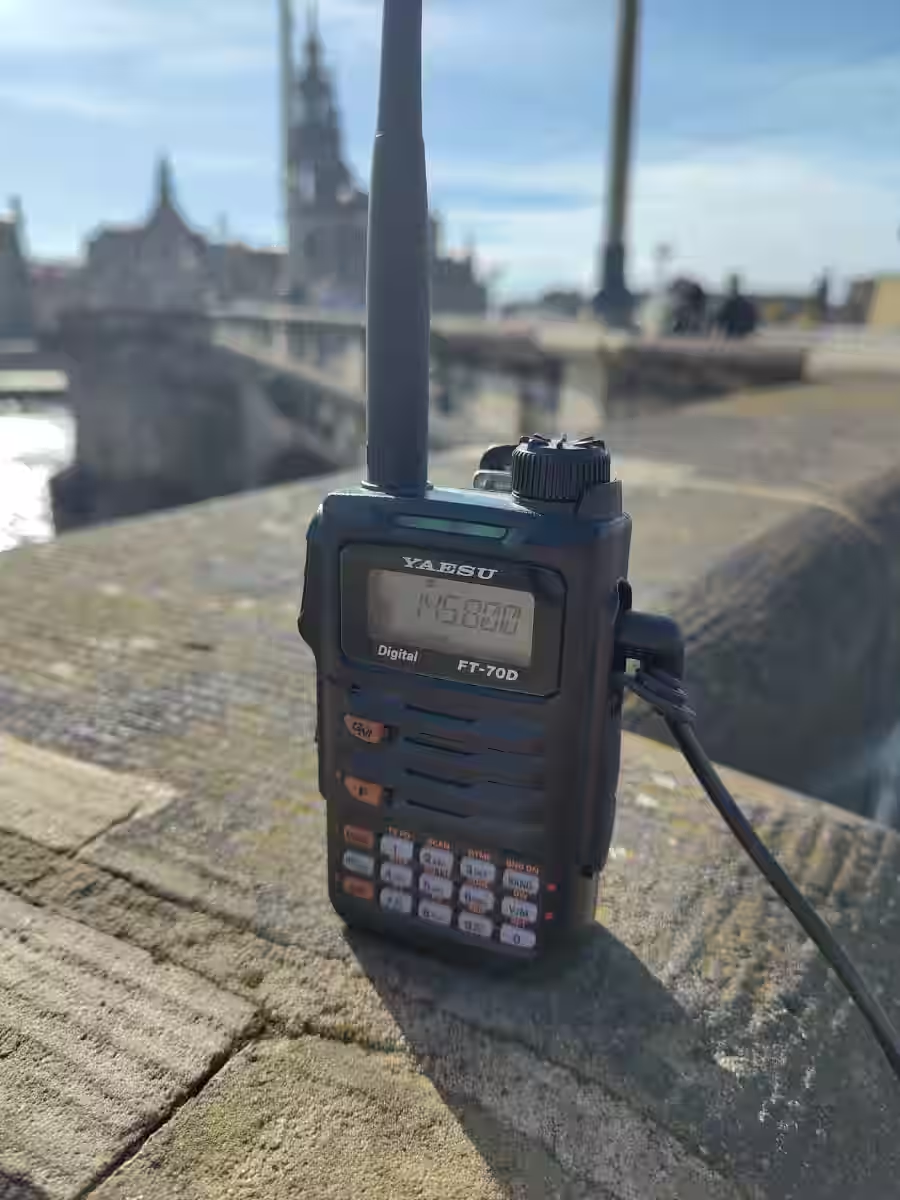 Due to the fact, that event happened from Tuesday to Monday and many good
passes were on weekdays, I had to improvise the places and methods used to
capture images.
I kept track of the ISS and upcoming passes using the App Look4Sat
for Android on my phone.
For mobile decoding, I bought two cheap 3.5mm Audio/Video to composite cables and
(mis)used them to wire the right audio channel from my Yaesu FT-70DE via the
CT-44 accessory into the microphone input of my smartphone.
Then I decoded the images with the App Robot36.
Unfortunately I did not found a way to simultaneously record and decoded an
image on my phone, as modern Android does not allow recording or capturing
audio in the background.
Due to the fact, that event happened from Tuesday to Monday and many good
passes were on weekdays, I had to improvise the places and methods used to
capture images.
I kept track of the ISS and upcoming passes using the App Look4Sat
for Android on my phone.
For mobile decoding, I bought two cheap 3.5mm Audio/Video to composite cables and
(mis)used them to wire the right audio channel from my Yaesu FT-70DE via the
CT-44 accessory into the microphone input of my smartphone.
Then I decoded the images with the App Robot36.
Unfortunately I did not found a way to simultaneously record and decoded an
image on my phone, as modern Android does not allow recording or capturing
audio in the background.
At home and at the weekend, I had more freedom to experiment and test different methods to receive the signal.
For example with a dirt cheap tape-measure-yagi-uda antenna build from wood, tape measure and tho RTL-SDR blog dipole kit. The reflector and dipole each measured 1 meter in length and were spaced 50 centimeters apart. A 94 centimeter long director was then added 15 centimeters behind the dipole. While I did not do any measurements on the antenna’s SWR or gain, testing it in the field proved it to be good enough.
I also made use of a V-dipole (50 centimeters per leg) either on top of an attic window and out in the field. The results were at least better than the hand held radio.
For these attempts I always recorded the signal using an SDR and my laptop for the ability to optimize gain and bandwidth while receiving and tweaking the settings for decoding later on.
Here a slight shift because of the Doppler effect is visible in the waterfall chart. Anyway, enough with the technical stuff. Here come the images:
Picture 1/12
| Antenna | Start of recording | QTH |
|---|---|---|
| tape measure yagi | 2024-10-12 10:50:55 UTC | JO60tq |
Picture 2/12
| Antenna | Start of recording | QTH |
|---|---|---|
| tape measure yagi | 2024-10-12 09:15:22 UTC | JO60uq |
Picture 10/12
| Antenna | Start of recording | QTH |
|---|---|---|
| V-dipole | 2024-10-14 10:50:37 UTC | JO61vb |
Picture 11/12
| Antenna | Start of recording | QTH |
|---|---|---|
| V-dipole | 2024-10-14 09:16:05 UTC | JO61vb |
Picture 12/12
| Antenna | Start of recording | QTH |
|---|---|---|
| tape measure yagi | 2024-10-13 10:03:42 UTC | JO61sr |
QSL Card
It is possible to obtain a QSL card for receiving images from the ARISS SSTV event. Further details on how to do so are liste on the ARISS homepage. My QSL card arrived in the post at the beginning of November.
